Shifting Seasons - How will seasonal changes affect European landscape professionals?
22 Sept 2022 Landscaping & Turfcare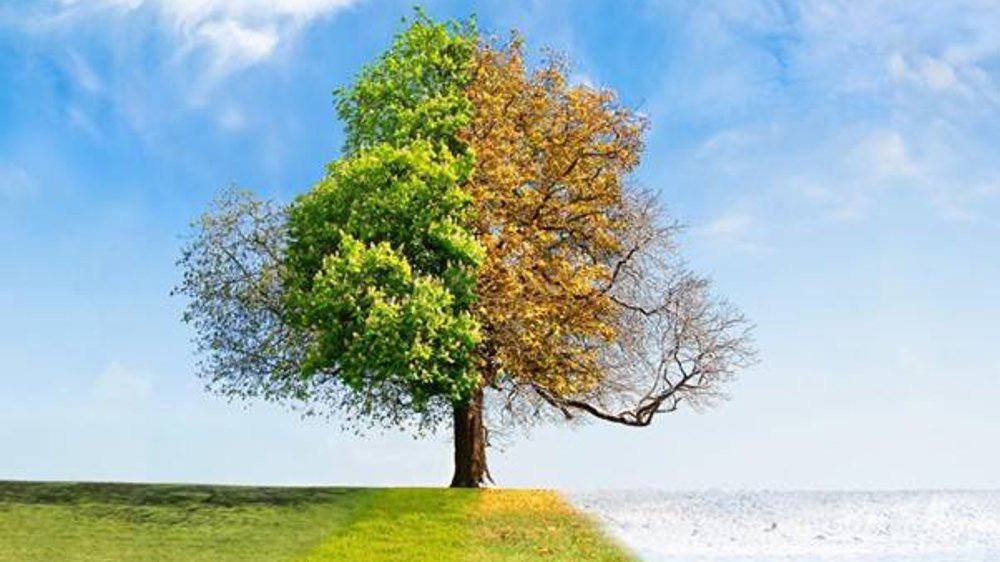
A scorching summer has left grass across Europe a singed and sickly yellow, in what has been one of the hottest years on record. It’s apparent that the seasons and weather patterns in Europe are changing, for better or worse, and it is affecting lives and livelihoods across the continent.
Spring begins earlier, summers are longer – and more intense – while winters are shortening. For landscape gardeners, this shift is especially of note, as the inherently seasonal workload of the industry is subject to these changes.
Seasonal shifts directly impact landscapers in a variety of ways, from planning and preparation for jobs, lawn care methods, working hours and maintenance schedules, to plant selection. As we wait for the grass to recover in the cooler temperatures of autumn, we will examine the changes that are happening across Europe, and what landscapers can do to prepare for them.
So, what’s changed?
There’s a general consensus, backed by countless pieces of research and data on the issue, that the seasons have shifted and weather patterns have changed in the last 100 years; and it’s a change that only seems to be accelerating. While some signs are hard to miss, like drought and intense heat, others are more subtle.
We have gathered a list of the most notable changes, many of which you may have noticed in your own daily life. Even if it’s not something you have really considered, you may recognise more than you think!
Shorter winters, longer summers
Winter starts later, and spring comes earlier. The American Geophysical Union found that winters across the Northern Hemisphere shortened by three days between 1950 and 2010; for northern Europe this is a mild estimate, as according to the International Journal of Climatology, the 20th century saw 30 days wiped off the winter season in countries such as Estonia and Poland.
The majority of these winter days have gone to summer. Spring and autumn have also contracted; summer is the only season to have lengthened over the past century. If the trend continues, it is estimated that summer could last for six months by 2100.
Autumn starts later
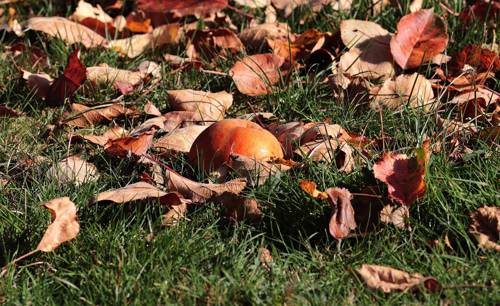
Falling leaves and cooler temperatures are coming later than usual in Europe. With summer dragging its heels into September, autumn has been pushed back further in the year in a phenomenon known as seasonal creep.
Officially autumn begins in September in Europe, but the reality is that the signs we typically associate with the season are falling later and later: the reds, ambers and golden yellows of autumn foliage often fail to reach their peak until November.
Early bloom
It is with an ever-increasing frequency that we are marvelling at an early blossom; arbitrarily commenting on how unusual it is to see snowdrops so early in the year, or remarking on how prematurely birds are beginning to nest. In truth, the first signs of spring are coming early with alarming regularity.
When temperatures change, nature follows. In many parts of Europe, it’s frequently warmer in December and January than it used to be, and wildlife and flora react to this increase by coming out of hibernation accordingly. Growing season starts sooner than you might expect in Europe, with some of the earliest spring flowers making an appearance in January.
Extreme heat
Extreme summers are becoming the norm, where once they were outliers. Eight of the top 10 hottest years on our planet have occurred in the last decade. It’s not unusual to see wildfires and drought in Europe from late June through to August – even countries in northern Europe are no longer exempt.
Heatwaves and drought were once more notable events, but are becoming routine. 2022, however, has marked a year of particularly astonishing high temperatures. The highest recorded was 47°C in June in Pinhão, Portugal, while several temperature records were broken in France and the UK. The latter of which surpassed 40°C for the first time in recorded history.
This pattern of intense heatwaves in summer could have long-term consequences for Europe. Grass and plants that once thrived in our respective climates may struggle, risk of wildfires may increase and outdoor-based workers will deal with increased health risk concerns in the extreme heat.
Pests and insects
Pests and insects may seem an afterthought when compared to the dramatic, Earth-changing events of a seasonal shift and more droughts and floods. But insect populations are fluctuating due to changing temperatures, and we are yet to see the true impact of this issue.
Some insect species are thriving, while others are beginning to disappear. Pollinators like bees and butterflies have been disproportionately affected. Fewer pollinators will eventually lead to a reduction in the diversity of plant species, and some plants may begin to disappear altogether.
While pollinators are on the decline, pest insect populations are booming, as other species are migrating into Europe due to warmer temperatures. Greater numbers of insects, such as the hummingbird hawk-moth in Northern Europe, will bring new problems for gardens and wildlife, as a lack of natural predators will see rising numbers feeding on plants and crops. Alongside insects, warmer temperatures earlier in the year may, through additional stresses, encourage the spread of diseases among plants and grass.
Extreme rainfall: floods in winter, drought in summer
Rainfall events, such as heavy rainfall in winter and drought in summer, are likely to become more extreme in the future if the current trend continues.
While most of Europe will see minimal – if any – rainfall in the summer months, the winter can bring torrential rains. Of course, even a drought brings risk of flooding, as the parched ground is unable to absorb water when rain eventually falls, increasing the danger of flash floods. These extreme weather swings can also be extended to frost and snow storms in winter, which we are seeing flurries of in Europe; rather than a steady, predictable stream of cold weather, we are seeing bursts of extreme snowfall in between weeks of mild weather. This is caused by weaknesses in the gulf stream created by rising temperatures, which can leave Europe exposed to arctic blasts of icy weather.
How will these seasonal shifts affect landscapers?
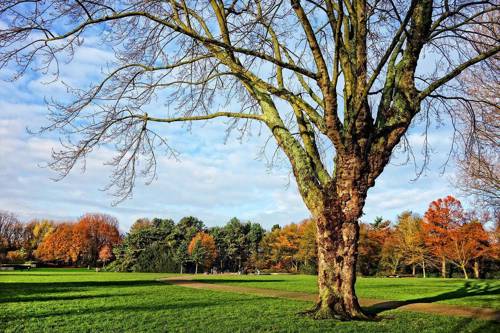
We’ve detailed the changes that have become a feature of Europe’s calendar year. But how will these shifts affect landscapers?
Intensely hot summers, with the droughts that come alongside them, will mean landscapers need to be careful when choosing grass seed, plants and shrubbery, to ensure they can cope with the heat. They may also have to turn their focus away from lawn care during particularly dry weeks. Dealing with an increase in pests and lawn diseases could also be an issue moving forward. Landscapers will have to prepare for drought in summer, and heavy rain in winter; treating the grass in preparation for both. Schedules will likely change, and these record-breaking hot days will not be conducive to working outside in the afternoon.
Of course, it’s not all doom and gloom for landscapers. Summer is the season that landscapers spend the most time working, while winters offer the least opportunity. A slight extension to summer, provided that there are longer periods of moderate heat and some rainfall, means peak season for landscaping is longer, which could increase business opportunities for those in the industry.
10 ways you can prepare
To mitigate the effects of shifting seasons and take advantage of a few of the more landscaper-friendly changes, these are some actions you can take to prepare.
1. Start work earlier in the day during summer
While this will seem obvious – especially to our landscapers based in Mediterranean countries – many northern climates aren’t quite so used to such intense heat. Factoring in the need to halt work for much of the afternoon will help jobs go smoothly without risking your health.
Your body and your health are essentially your business in this profession, and you need to take care of yourself to succeed. Avoid burnout in the summer by stopping yourself from pushing through intense weather conditions: the short-term gains are not worth the long-term health effects. When appropriate and agreed upon with customers, you can start work early in the morning to take advantage of the cooler temperatures, and forecast a slightly longer job length for particularly physically demanding work.
2. Offer other services and become an all-rounder landscaping business
Lawn care is at the heart of landscape maintenance, but when the majority of lawns spend at least a month in summer straw-like and dry, it pays to have a business with variety.
Where soft landscaping may rely on grass, plants and trees growing healthily, hard landscaping does not. Building fences, brickwork, laying patios and decking or any other work that does not involve the ‘soft’, living parts of the garden can continue through drought conditions.
Ensuring you have a well-rounded landscaping business – that can maintain workloads through periods of severe drought – will become increasingly imperative to success moving forward.
3. Invest in drought-tolerant grass seeds
For most of the continent, drought is only going to become more common in the future. To combat this, many seed breeders are developing grass seeds more tolerant of heat and low rainfall. Investing in drought-tolerant grass seeds, which root themselves deeper in the soil, could help prevent the lawn from suffering too many bare patches, making your life easier in the autumn.
4. Move your expected spring schedule earlier in the year, and plan accordingly
As seasonal business owners, there is pressure on landscapers to perfect their schedule, knowing exactly when they need to start ramping up their efforts and to begin certain tasks. A missed opportunity in spring can feel like a painful start to the year. Preparing beforehand and starting your early-spring jobs before you typically would can help you get ahead of the pack.
Keep checking soil temperature; once the overnight temperature is above 5 degrees celsius, you can begin tasks like aeration. Making sure your mower is well-serviced and stocking up on supplies – such as spare filters – that you will need throughout the year can help you get an excellent headstart.
Just as spring can move earlier, autumn and winter can start later. Expect your summer schedule to last a little longer, and monitor turf conditions carefully before beginning autumn tasks and changing cutting height.
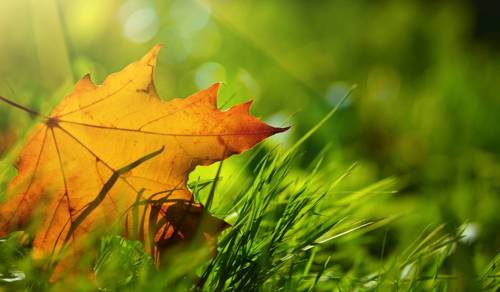
5. Look at a 5-year pattern
While newer landscape professionals will be at a slight disadvantage with this, they still may have noticed changes in weather patterns in their day-to-day lives.
Looking at a 5-year pattern is a great way to establish if a change is an anomaly or becoming normality. If a spring thaw has begun earlier - or later, or is colder, hotter etc - and has been doing so with increasing regularity, you should expect it to continue. This same principle applies to the entire year; if summers are hotter, winters colder, or any seasonal changes at all you have noticed in your area have been occurring for the last five years, you should incorporate them into your plans.
6. Invest in reliable machinery
Working through the heat in summer, which, if growing conditions permit, could extend well into September, is likely to place a greater strain on your machinery. Purchasing high-quality, reliable mowers, brushcutters and any other tools you may need will be essential in maintaining productivity levels.
Ensuring your machinery has an engine that can cope with a strenuous workload could be the difference between a productive day at work and one spent at the repair shop. Initial investments often pay themselves back when repairs and hidden costs, like lost productivity and inefficiency, are taken into account.
7. Encourage rainwater harvesting
An increase in droughts means an increase in water use restrictions. Encouraging customers to install rainwater butts will help you manage when this inevitably occurs.
Rainwater harvesting is a responsible approach to landscape gardening, as water conservation will become increasingly important with the hotter summers we are experiencing. A friendly suggestion to customers to install a rainwater butt – with the angle that it will benefit their garden (especially as plants prefer it to tap water!) – could help you avoid issues created by a restriction on water usage.
8. Pest and disease control
Keep an even closer eye on signs of disease and pests in plants, trees and lawns. With an influx of insects and pests, and a higher risk of disease due to increasing temperatures, landscape professionals will need to be quick to combat any indications of disease with the appropriate treatments.
9. Aeration and rain gardens
Constant downpours in winter will create a demand for better drainage to help avoid flooding.
The trend of paving over grass and flower beds has created a higher risk of flooding; having designated rain gardens can help remove some of the runoff. To protect the lawn, regular aeration to encourage drainage is also essential; even if the lawn is already water-logged, aeration can help to drain the area.
10. Autumn aftercare
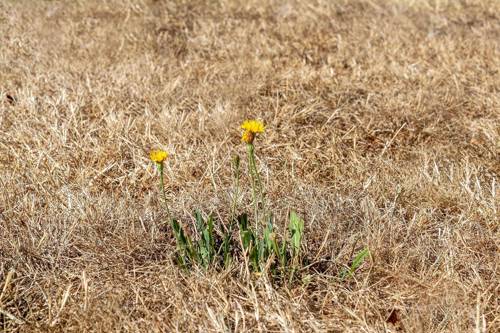
After long periods of drought, the repair and revitalisation work of autumn becomes even more crucial. Autumn will quickly become a critical season for lawn care in much of Europe: fixing bare patches, giving the lawn the appropriate feed and treatments, and general maintenance will be essential in preparing the lawn for the following year.
Landscape maintenance and coping with shifting seasons
It’s becoming harder and harder to ignore seasonal changes and their impact on landscape gardening. It’s a profession that feels a change in climate with immediate effect, and is one of the first industries to be impacted by the shift in seasons.
By acknowledging and identifying the changes, landscape professionals can take steps to prepare against them. Being ahead of the curve will allow your business to succeed despite the challenges we have discussed – and ensures you feel confident and prepared for all weathers heading into the next year.
If you are looking to expand your business into new disciplines or invest in high-quality, reliable equipment, explore the machinery powered by Kawasaki today.
You may be interested in
-
The most iconic green spaces in Europe

-
When should you scarify a lawn and how to revive it afterwards

-
What are the greenest countries in Europe?

-
How to weatherproof a lawn and protect it from flood, frost and drought

-
Landscaping trends for 2024

-
Have you fallen for any of these landscape maintenance myths?







